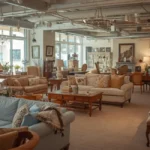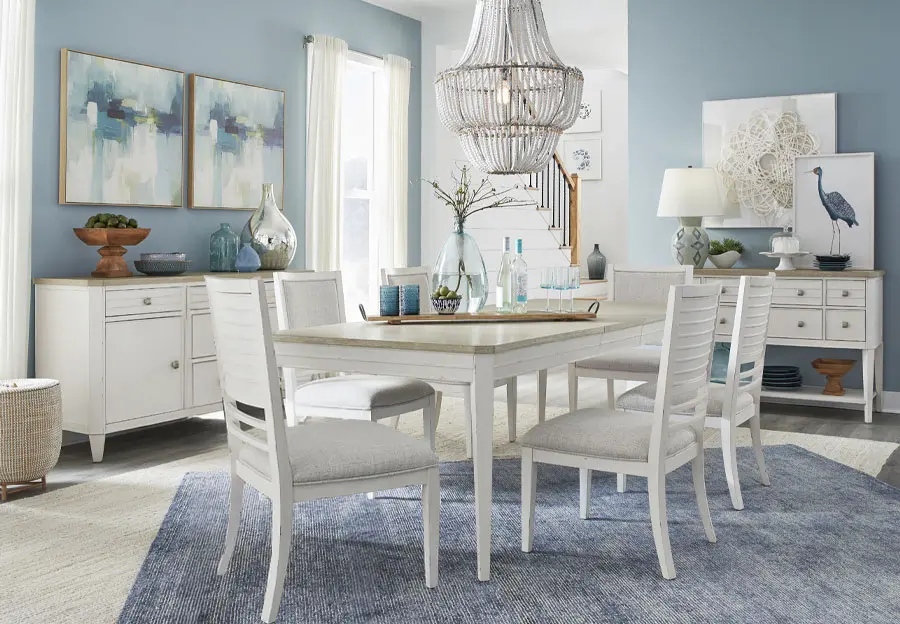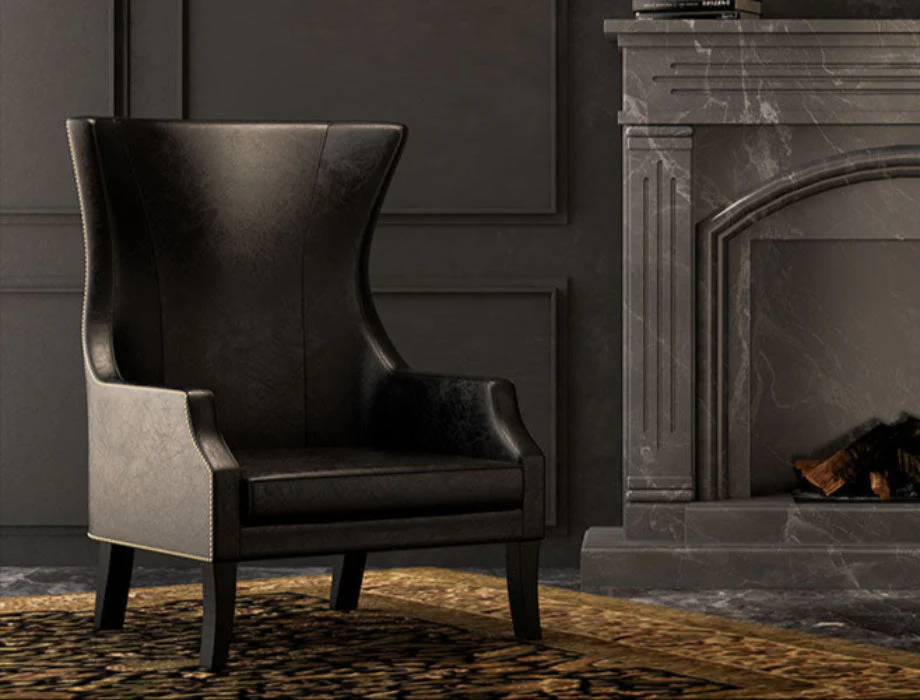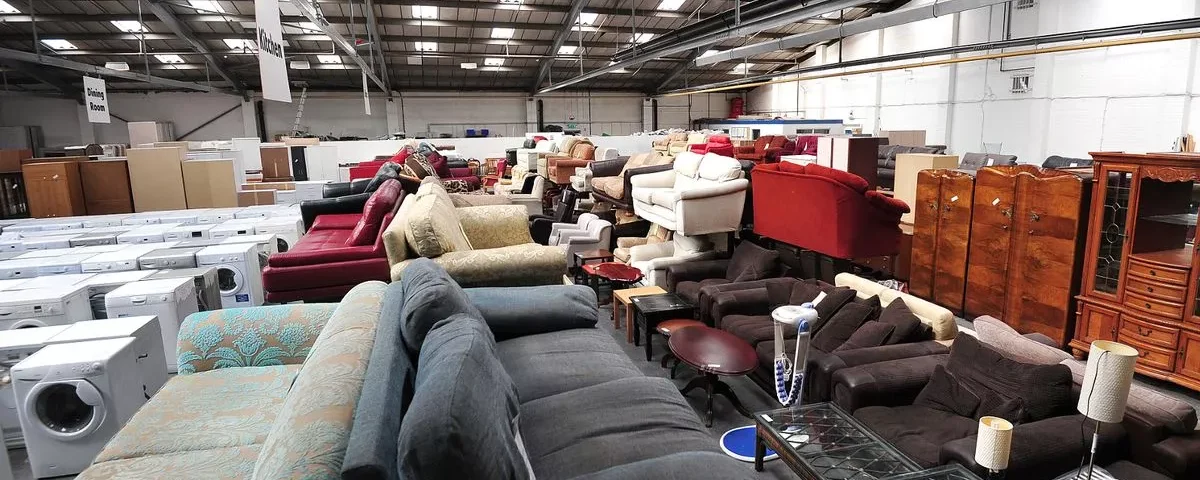
Fire Stick Remote Flashing Yellow? Your Ultimate Guide to Understanding & Fixing It Fast!
November 14, 2025
Used Furniture Near Me Your Ultimate Guide to Finding Quality & Value Locally
November 20, 2025Why Go Second-Hand in Manchester?
If you’re furnishing a new flat, giving your home a refresh, or hunting for something with a bit more character, the price of new furniture can feel discouraging. Add the environmental impact of fast furniture into the mix, and it’s easy to see why so many people in Manchester feel stuck between wanting a stylish home and wanting to make smarter, more sustainable choices.
Finding quality pieces at a fair price isn’t always straightforward. You might worry about hidden damage, how to move larger items, or simply where to start your search. This guide is here to make the process simple. It walks you through Manchester’s second-hand furniture scene step by step so you can shop with confidence, save money, and discover pieces that make your home feel personal and lived in.
By the time you’re done, you’ll know how to find, assess, transport, and maintain second-hand furniture that suits your space and your budget. The goal is to help you create a home that feels good to live in while supporting a more sustainable lifestyle.
Where to Find Second-Hand Furniture Gems in Manchester
Manchester offers plenty of places to uncover second-hand treasures. Whether you prefer rummaging through charity shops, browsing curated vintage stores, or scrolling online listings, the city gives you plenty of ways to find furniture that suits your style and budget.
Below is a clear breakdown of the main sources and what each one offers.
|
Source Type |
Examples in Manchester |
Pros |
Cons |
Best For |
|
Charity Shops |
British Heart Foundation (multiple branches, including Oxford Road and Oldham Street), Emmaus (Mossley), Salvation Army shops, local hospice shops around Didsbury, Withington, and Chorlton |
Easy on the wallet, supports local causes, stock rotates often, wide mix of everyday items |
Quality varies; items may need cleaning or minor repairs, less predictable for specific pieces |
Students furnishing new flats, budget-friendly sofas and wardrobes, starter furniture for new homeowners |
|
Vintage & Antique Stores |
Afflecks (Northern Quarter), Pop Boutique (selected vintage homeware), independent shops around Northern Quarter, Chorlton, and Levenshulme’s antique stretch |
Unique character pieces, often restored, better quality, knowledgeable staff, curated collections |
Higher prices, smaller inventories, sometimes niche styles |
Statement pieces for Northern Quarter apartments, mid-century furniture, and restored items for design-focused homes |
|
Online Marketplaces |
Facebook Marketplace (Manchester-specific groups), Gumtree, eBay with local pickup filters, Vinted for smaller decor |
Huge variety, easy to find specific items, negotiate directly with sellers, many affordable or free options |
Quality can be hit-or-miss, time-consuming searches, potential scams, and you handle transport |
Cheap or free furniture for tight budgets, quick finds, and sourcing specific items like desks or bookshelves |
|
Community & Council Schemes |
Manchester City Council reuse initiatives, local community hubs, charity-run furniture reuse projects |
Very affordable (sometimes free), reduces waste, supports local communities |
Stock depends on donations, limited choice, and eligibility rules for some programs |
Essential furniture for low-income households, functional basics, sustainable options for people starting fresh |
|
Auction Houses & Fairs |
Capes Dunn Auctions (Salford), local antique fairs, vintage and flea markets, such as Altrincham Market events |
Chance to grab bargains, exciting atmosphere, access to older or rare pieces |
Items sold as-is, competition for bidsand , arranging transport is usually on you |
Antique finds, large dining sets, vintage cabinets, unique pieces for experienced or enthusiastic buyers |
Charity Shops: Affordable Gems for Good Causes
Manchester has a strong network of charity shops, and many of them carry a steady rotation of furniture at prices that are hard to beat. Large chains like British Heart Foundation and Emmaus are well known for their spacious layouts and consistent stock, but it’s also worth exploring smaller local charity shops tucked into neighbourhoods like Chorlton, Withington, and Didsbury. These smaller shops often receive unexpected one-off donations that never make it to bigger stores.
To get the best results, visit often. Stock changes daily, and the best pieces usually sell within hours. Don’t be discouraged by marks or dust. Many pieces only need a good wipe-down, a fresh coat of varnish, or new handles to look completely different. If you don’t have a car, ask about delivery. Larger charity shops usually offer affordable delivery options, which can save you a lot of effort.
Product Recommendation: Great for simple, practical furniture such as side tables, bookshelves, dining chairs, and dressers that you can lightly refresh or upcycle.

Tables, bookshelves, dining chairs,
Vintage and Antique Stores: Curated Character
If you’re after something with more personality, Manchester’s vintage and antique shops offer a different level of charm. Areas like the Northern Quarter and Chorlton are packed with independent stores that specialise in everything from mid-century pieces to art deco finds. These shops are more curated, so you won’t sift through piles of basic items. Instead, you’ll find pieces that already have a story, often restored and ready for another life.
Expect higher quality and more knowledgeable staff who understand the history behind what they sell. These shops are ideal if you’re decorating a space where personality matters, or if you’re trying to avoid mass-produced furniture that looks the same everywhere else.
Product Recommendation: Best for eye-catching pieces like vintage armchairs, retro sideboards, and unique art deco furniture that instantly elevate a room.
Online Marketplaces: The Digital Hunt
Online platforms make it easy to browse second-hand furniture without leaving home. Facebook Marketplace is especially useful in Manchester, thanks to large local groups where people list everything from sofas to full dining sets, often at very low prices or even free if you can collect quickly. When dealing with independent sellers, check their profile or past reviews if available. It helps you gauge whether they’re reliable.
Gumtree and eBay can also be great sources, especially if you filter for local pickup. You’ll get a wider range of listings, but it requires more browsing. Nextdoor is another solid option for hyper-local finds that come straight from your neighbourhood.
When searching online, use specific keywords. Instead of typing “sideboard,” try “mid-century sideboard Manchester.” Ask sellers for clear photos, measurements, and any details about damage or wear before committing. And don’t hesitate to negotiate. Most private sellers expect it, especially when you’re picking up in person.
Product Recommendation: Ideal for almost anything you might need, including sofas, wardrobes, desks, and dining tables.

Vintage Armchairs
Online Marketplaces: The Digital Hunt
Online platforms make it easy to browse second-hand furniture without leaving home. Facebook Marketplace is especially useful in Manchester, thanks to large local groups where people list everything from sofas to full dining sets, often at very low prices or even free if you can collect quickly. When dealing with independent sellers, check their profile or past reviews if available. It helps you gauge whether they’re reliable.
Gumtree and eBay can also be great sources, especially if you filter for local pickup. You’ll get a wider range of listings, but it requires more browsing. Nextdoor is another solid option for hyper-local finds that come straight from your neighbourhood.
When searching online, use specific keywords. Instead of typing “sideboard,” try “mid-century sideboard Manchester.” Ask sellers for clear photos, measurements, and any details about damage or wear before committing. And don’t hesitate to negotiate. Most private sellers expect it, especially when you’re picking up in person.
Product Recommendation: Ideal for almost anything you might need, including sofas, wardrobes, desks, and dining tables.

vintage stores
Smart Shopping: What Second-Hand Furniture to Buy (and What to Skip)
Buying second-hand can save you a lot of money, but knowing what’s worth bringing home makes the difference between a great find and a mistake you’ll regret. Focus on pieces with solid construction and long-term potential, and be cautious with items that are hard to clean or repair.
Second-Hand Furniture Worth Investing In
Solid Wood Furniture
Tables, chairs, dressers, and cabinets made from oak, pine, teak, or mahogany are some of the safest and most valuable second-hand buys. They last for decades, can be refinished easily, and often look better with age.
Expert Tip: Prioritize Solid Wood
It handles repairs, sanding, and staining much better than particle board or veneer. If you want pieces you can upcycle or keep long-term, solid wood usually gives you the best return.
Vintage and Retro Pieces
Furniture from eras like mid-century modern or Art Deco often combines strong craftsmanship with timeless style. These items can instantly add personality to your home and are usually built to last.
Metal and Wrought Iron
Metal bed frames, shelving, or accent furniture tend to stay sturdy over time. They’re simple to clean, resist wear, and rarely suffer from structural problems.
Good Quality Frames (Sofas and Armchairs)
Even if the fabric looks worn, a solid frame can be worth buying. Upholstery can be cleaned or replaced as long as the structure underneath is sound. Check for wobbling or squeaking before committing.
Product Recommendation: Look for heavy, well-constructed wooden frames when shopping for second-hand sofas or armchairs.
Bookshelves and Storage Units
These are often in great condition even after years of use. They hold their value well, and simple units can blend into almost any room.
What to Approach with Caution (or Avoid Entirely)
Heavily Used Upholstered Items (Sofas and Mattresses)
These carry the highest risk for stains, odours, allergens, and pests. Mattresses, especially, are best bought new unless sealed and certified.
Expert Tip: If you decide to buy upholstered items, plan for a deep clean or steam sanitization immediately.
Particle Board or MDF Furniture
These materials don’t age well. They’re more prone to water damage, sagging shelves, and broken joints. Repairs are usually difficult or impossible.
Items with Structural Damage
Anything with a broken frame, loose joints, or deep cracks will likely cost more to repair than it’s worth. Unless you have serious DIY skills, skip these.
Baby Cribs and Car Seats
Safety standards change often, and hidden damage isn’t always visible. For anything child-related, buying new is usually the safer route.
Anything with a Strong Odour
Smells from smoke, mold,d, or pet accidents are incredibly hard to remove, even with professional cleaning. If it smells bad, avoid it.
Your Essential Second-Hand Furniture Inspection Checklist
A careful inspection is the best way to avoid surprises when buying second-hand. This checklist helps you check quality, spot hidden issues, and feel confident about what you’re bringing home.
General Inspection Principles
Go in Person
Whenever possible, view the item in person. Photos can hide damage, poor construction, or wear that’s only obvious up close.
Bring Tools
A small flashlight, a tape measure, and a pair of gloves make inspections easier. The flashlight helps you see hidden corners, while the tape measure saves you from buying something that won’t fit through your doorway.
Product Recommendation: Keep a small flashlight and a tape measure in your bag when shopping.
Don’t Rush
Take your time. A few extra minutes spent checking details can prevent expensive problems later.
Structural Integrity and Stability
Wobble Test
Give the item a gentle shake. If it wobbles more than expected, it may have loose joints or a weakened frame.
Joints and Connections
Look closely at where pieces join together. Loose screws, weak glue, or visible gaps are signs of poor stability.
Legs and Base
Make sure all legs are secure and even. Uneven legs can indicate damage you can’t see at first glance.
Drawers and Doors
Open and close everything. Drawers should slide smoothly, and doors should sit straight without sticking.
Expert Tip: Always check for strong structure, any signs of pests, unpleasant smells, and hidden damage before you make a final decision.
Pest Checks
Woodworm
Tiny pin-sized holes in wooden surfaces, especially on the back or underside, can signal woodworm. Fine powder or sawdust around the holes means the infestation may still be active.
Bed Bugs
For upholstered items, check seams, zippers, and fabric folds. Look for small reddish-brown stains, tiny white eggs, or the bugs themselves. Your flashlight is essential here.
Other Insects
Keep an eye out for cobwebs, insect casings, or other signs of pests that could have settled in.
Odour Assessment
Trust Your Nose
If an item smells strongly of smoke, damp, mould, or pets, it will be very hard to fix. Strong odours often linger even after deep cleaning.
Upholstery
Fabrics absorb smells easily, so pay close attention to sofas, chairs, and headboards.
Wear, Tear, and Overall Condition
Scratches and Dents
Decide whether imperfections are simple surface marks or deep damage. Light scratches are easy to fix, but large dents may need professional repair.
Upholstery and Fabric
Check for fading, pilling, tears, or stains. If reupholstery is needed, factor that cost into your budget.
Hardware
Make sure handles, knobs, and hinges are present and working. Finding matching replacements can be time-consuming and pricey.
Finish Condition
Look at the paint or varnish. Flaking, peeling, or discoloration can signal deeper issues or extra work ahead.
Expert Tip: Don’t dismiss an item just because it looks tired. Many of the best finds are structurally solid pieces that simply need a bit of attention.
Navigating Transport: Getting Your Finds Home in Manchester
Transport is one of the biggest challenges when buying second-hand furniture. Whether you’re picking up a small chair or a full dining set, planning helps you avoid stress and unexpected costs. Here are the most reliable ways to get your new finds home safely.
Planning Your Transport Strategy
Measure Twice, Buy Once
Before you commit, measure the item carefully. Measure your space at home too, including doorways, stairwells, and tight corners. Many buyers fall in love with a piece only to find it won’t make it up the stairs.
Expert Tip: Always measure the furniture and your home access points to avoid problems later.
Ask the Seller About Delivery
Some independent vintage shops and even larger charity shops in Manchester offer delivery for a small fee. It’s always worth asking, especially for bulky items.
Consider Weight and Fragility
Lighter pieces may seem easy, but don’t underestimate the effort needed to move heavy or delicate items. A fragile glass cabinet or a solid oak dresser requires care and planning.
Self-Transport Tips for Smaller Items
If the item is small enough, your own car might do the job.
Car Boot or Back Seats
Chairs, small tables, bedside units, and flat-packed pieces can often fit into most cars when angled correctly.
Protective Gear
Bring old blankets, sheets, and bungee cords. They help prevent scratches, reduce shifting during transport, and protect your car’s interior.
Local Van Hire Services in Manchester
For larger items like wardrobes, bed frames, or dining tables, hiring a van for a couple of hours can be a smart move.
DIY Van Hire
Short-term van hire is widely available across Manchester. It’s usually affordable if you only need the vehicle for a quick pickup.
Local Providers
Manchester has several van hire companies, so be sure to check pricing and availability in your area.
Cost Considerations
Remember to factor in fuel, insurance, and hourly rates when comparing options.
Product Recommendation: For bigger purchases, consider hiring a local van to make transport easier.
“Man with a Van” Services
If you prefer not to drive a van or need extra help lifting, a “man with a van” service is often the easiest option.
Convenience
These services do the driving and the heavy lifting, which is ideal if you’re moving large or fragile items.
Local Services
Search online for “man with a van Manchester” to find nearby providers. Many offer same-day or next-day availability.
Expert Tip: Always account for transport costs when budgeting for second-hand furniture.
Get Quotes
Prices vary, so get a few quotes before booking. Make sure you understand what’s included, especially if stairs or long distances are involved.
Insurance Check
Confirm that they have goods-in-transit insurance to protect your furniture during the move.
Community Transport Schemes
Manchester also has community groups and council-backed initiatives that offer low-cost transport options. These are especially useful for people who receive items from community reuse hubs or charity-supported schemes.
Local Initiatives
Some Manchester City Council reuse projects and local charities may offer transport support at discounted rates. These services vary, so it’s worth asking if you’re buying from a community-run hub.
Cleaning and Caring for Your Second-Hand Treasures
Bringing a second-hand item home is a great way to save money and give something a fresh start, but it deserves a proper clean before you start using it. A little care up front helps you get the most out of your find.
General Cleaning Principles
- Initial wipe-down: Begin with a simple wipe using a damp cloth and a mild all-purpose cleaner. This removes dust, fingerprints, and surface grime.
• Good ventilation: Work in a space with plenty of airflow, especially if the item has a strong smell or you’re using heavy-duty cleaners.
• Spot test first: Try any new cleaner on a hidden area to make sure it won’t stain or damage the surface.
Upholstery Care
- Vacuum thoroughly: Use a strong vacuum with the right attachments to pull dust, crumbs, and allergens out of seams and corners.
• Freshen the fabric: For light smells, spray a fabric freshener or sprinkle baking soda over the surface and leave it to sit for a few hours before vacuuming.
• Steam clean for depth: A home steam cleaner can give fabric a deeper clean. For bigger jobs, consider hiring a professional upholstery service.
• Clean and sanitize: Plan to fully clean and sanitize any second-hand upholstered piece before bringing it into your living space, along with giving hard surfaces a good wipe.
• Handle stains carefully: Choose a stain remover that matches your fabric type and follow the instructions closely.
Wood Furniture Maintenance
- General cleaning: A mild wood cleaner or a gentle soap-and-water mix works well. Wipe it dry right away to avoid water marks.
• Conditioning: Use a good polish, wax, or oil to feed the wood and bring back its natural shine.
• Fixing scratches: Light scratches can often be touched up with scratch repair products. In some cases, rubbing a walnut over the mark helps blend it in.
• Pest concerns: If you think the piece might have woodworm, keep it separate from other furniture. Get advice from a pest control expert or use a woodworm treatment product.
Metal and Other Materials
- Metal: Wipe with mild detergent and a damp cloth. For rust, scrub gently with a wire brush, apply a rust remover, and finish with a protective sealant.
• Glass and mirrors: Use a regular glass cleaner and a microfiber cloth to avoid streaks.
• Plastic: Warm soapy water works for most cleanups. A magic eraser is helpful for tougher marks.
Revamp and Restore: Upcycling Your Manchester Finds
Upcycling gives your second-hand pieces a new identity and helps you bring your own style into your home. Whether you’re making small tweaks or taking on a bigger restoration project, even simple changes can make a big impact.
Basic Upcycling Ideas
- A fresh coat of paint: A new colour can completely change the feel of a dresser, cabinet, or side table. Chalk paint is a great option if you’re new to painting because it’s easy to work with and doesn’t require much prep.
• New hardware: Replacing old knobs, handles, or hinges with something modern or vintage can instantly update a piece.
• Wallpaper or decoupage: Adding patterned paper to drawer fronts, tabletops, or cabinet interiors gives the item a unique touch.
• Embrace upcycling potential: Don’t overlook pieces with cosmetic flaws. A bit of paint, cleaner upholstery, or a small repair can turn something worn-out into a standout item.
Simple Restoration Techniques
- Sanding and refinishing: For wood furniture, sanding off an old finish and applying fresh stain or varnish brings out the natural grain and gives the item a polished look.
• Fixing minor damage: Wood filler works well on small chips or cracks, while wood glue helps tighten loose joints.
• Basic upholstery: Chairs and stools with removable pads are easy to refresh. A new piece of fabric and a staple gun can make them look brand new.
Local Manchester Resources for Materials and Workshops
- DIY stores: Large hardware stores across the city offer paint, sandpaper, brushes, tools, and other essentials.
• Fabric shops: Great for upholstery projects and smaller decorative updates.
• Community workshops: Many community centres and craft groups run upcycling or restoration classes where beginners can learn techniques hands-on.
Local Support: Manchester Council and Community Furniture Initiatives
Manchester continues to push for sustainability and stronger community support, and that includes helping residents access affordable second-hand furniture. Several council-backed schemes, charities, and local social enterprises make it easier to find quality items while promoting reuse across the city.
Manchester City Council Reuse Schemes
- Overview: The council partners with different organisations to reduce bulky waste and keep reusable items out of landfill. These schemes help make good-quality furniture available to residents at little or no cost.
• Council initiatives: Manchester City Council often runs or supports official reuse programs that focus on collection, redistribution, and responsible disposal.
• How to access: Visit the council’s website to check the latest schemes, eligibility requirements, and details on collection or drop-off points.
• Why it matters: These programs help the environment, support local circular-economy efforts, and provide low-cost solutions for residents who need essential furniture.
Local Charity Furniture Reuse Programs
- More than retail: Many Manchester charities run dedicated furniture reuse projects alongside their high-street shops. Some offer free or discounted items for individuals and families who need support.
• Key local charities: Organisations such as Emmaus and various independent Manchester charities focus heavily on furniture reuse and redistribution.
• Donate and collect: Most of these charities accept good-quality furniture donations and may offer collection services, giving residents a responsible and sustainable way to clear out old items.
• Community impact: Buying from or donating to these programs directly supports vulnerable groups while reducing the amount of waste sent to landfills.
Community Hubs and Social Enterprises
- Local initiatives: Across Manchester, neighbourhood hubs and small social enterprises refurbish and redistribute furniture within their communities. These groups often work at a grassroots level and offer very affordable options.
• Get involved: Many rely on volunteers. Helping out is a practical way to support the reuse economy and give back to your local area.
Conclusion: Your Sustainable and Stylish Manchester Home Awaits
Congratulations! You now have a complete roadmap to exploring Manchester’s vibrant second-hand furniture scene. From the ever-changing aisles of charity shops to the carefully curated selections in vintage stores and the convenience of online marketplaces, the city offers countless opportunities to furnish your home in style, without breaking the bank.
Choosing second-hand isn’t just about saving money. Every piece you give a second life reduces waste, supports sustainability, and adds unique character to your space. By embracing these options, you’re contributing to a greener Manchester while creating a home that truly reflects your personal style and values.
Key Takeaways
- Manchester has a diverse and thriving second-hand furniture market.
• Careful inspection and planning are essential for smart purchases.
• Transport solutions, from DIY van hire to “man with a van” services, make moving your finds easier.
• Cleaning, proper care, and upcycling can transform almost any piece into something special.
• Local council schemes and community programs provide additional support and resources.
Expert Note: Local resources and schemes can evolve. This guide is designed with Manchester-specific information and will be regularly updated to remain accurate and useful.
So, what are you waiting for? Dive in and start uncovering hidden treasures that will make your Manchester home unique, comfortable, and sustainable. Happy hunting!







